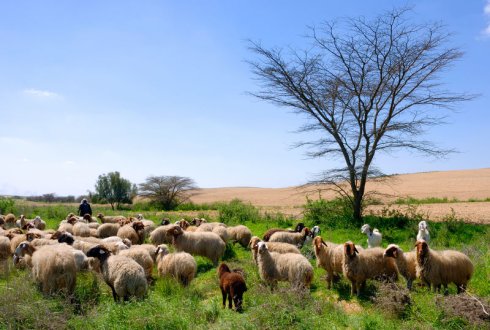ANIMAL ECOLOGY – Animal Husbandry And Veterinary Science Notes – For W.B.C.S. Examination.
পশু বাস্ত সংস্থান – পশুপালন ও পশু চিকিৎসা বিজ্ঞান নোট – WBCS পরীক্ষা।
Animal ecology concerns the relationships of individuals to their environments, including physical factors and other organisms, and the consequences of these relationships for evolution, population growth and regulation, interactions between species, the composition of biological communities, and energy flow and nutrient cycling through the ecosystem.Continue Reading ANIMAL ECOLOGY – Animal Husbandry And Veterinary Science Notes – For W.B.C.S. Examination.
From the standpoint of population, the individual organism is the fundamental unit of ecology. Factors influencing the survival and reproductive success of individuals form the basis for under-standing population processes.
Two general principles guide the study of animal ecology. One is the balance of nature, which states that ecological systems are regulated in approximately steady states. When a population becomes large, ecological pressures on population size, including food shortage, predation, and disease, tend to reduce the number of individuals. The second principle is that populations exist in dynamic relationship to their environments and that these relationships may cause ecological systems to vary dramatically over time and space. One of the challenges of animal ecology has been to reconcile these different viewpoints.
Populations depend on resources, including space, food, and opportunities to escape from predators. The amount of a resource potentially available to a population is generally thought of as being a property of the environment. As individuals consume resources they reduce the availability of these resources to others in the population. Thus, individuals are said to compete for resources. Larger populations result in a smaller share of resources per individual, which may lead to reduced survival and fecundity. Dense populations also attract predators and provide conditions for rapid transmission of contagious diseases, which generate pressure to reduce population size.
Changes in population size reflect both extrinsic variation in the environment that affects birth and death rates and intrinsic dynamics that result in oscillations or irregular fluctuations in population size. In some situations, the stable state may be a regular oscillation known as a limit cycle. Ecological systems also may switch between alternative stable states, as in the case of populations that are regulated at a high level by food limitation or at a low level by predators or other enemies. Switching between alternative stable states may be driven by changes in the environment.
Please subscribe here to get all future updates on this post/page/category/website


 +919674493673
+919674493673  mailus@wbcsmadeeasy.in
mailus@wbcsmadeeasy.in







































































































